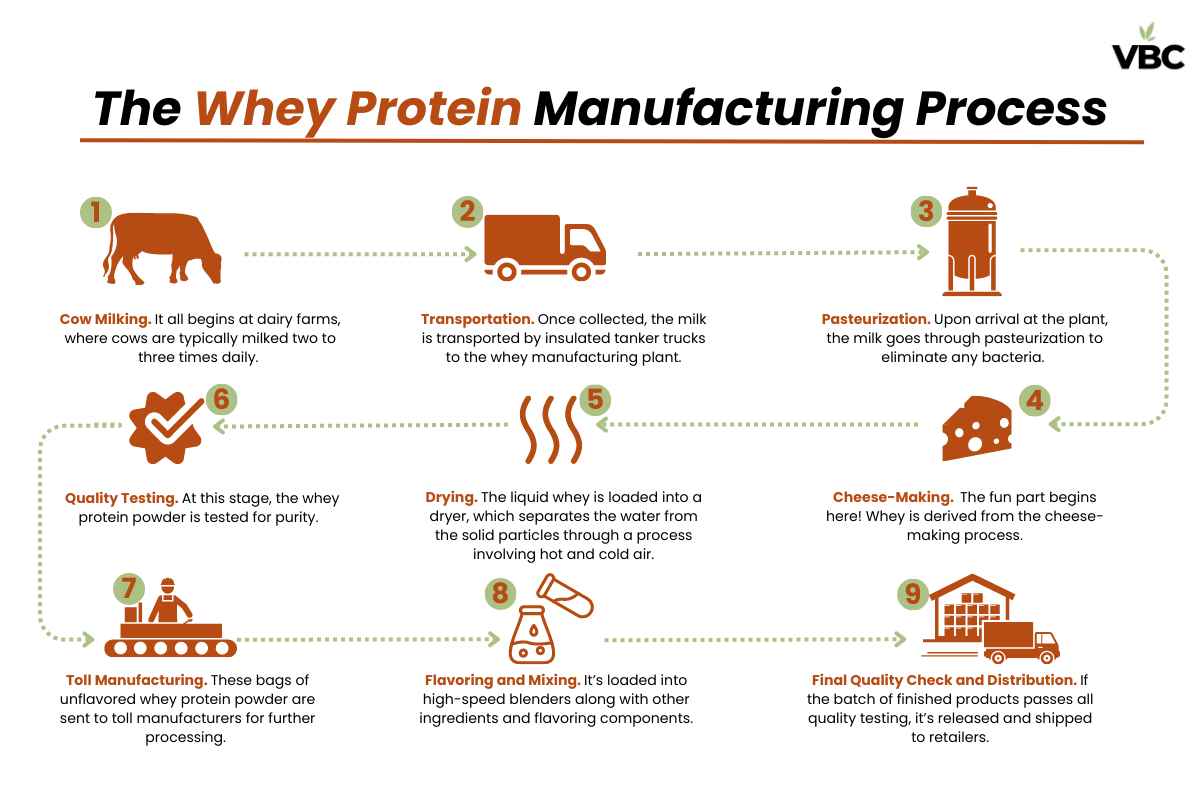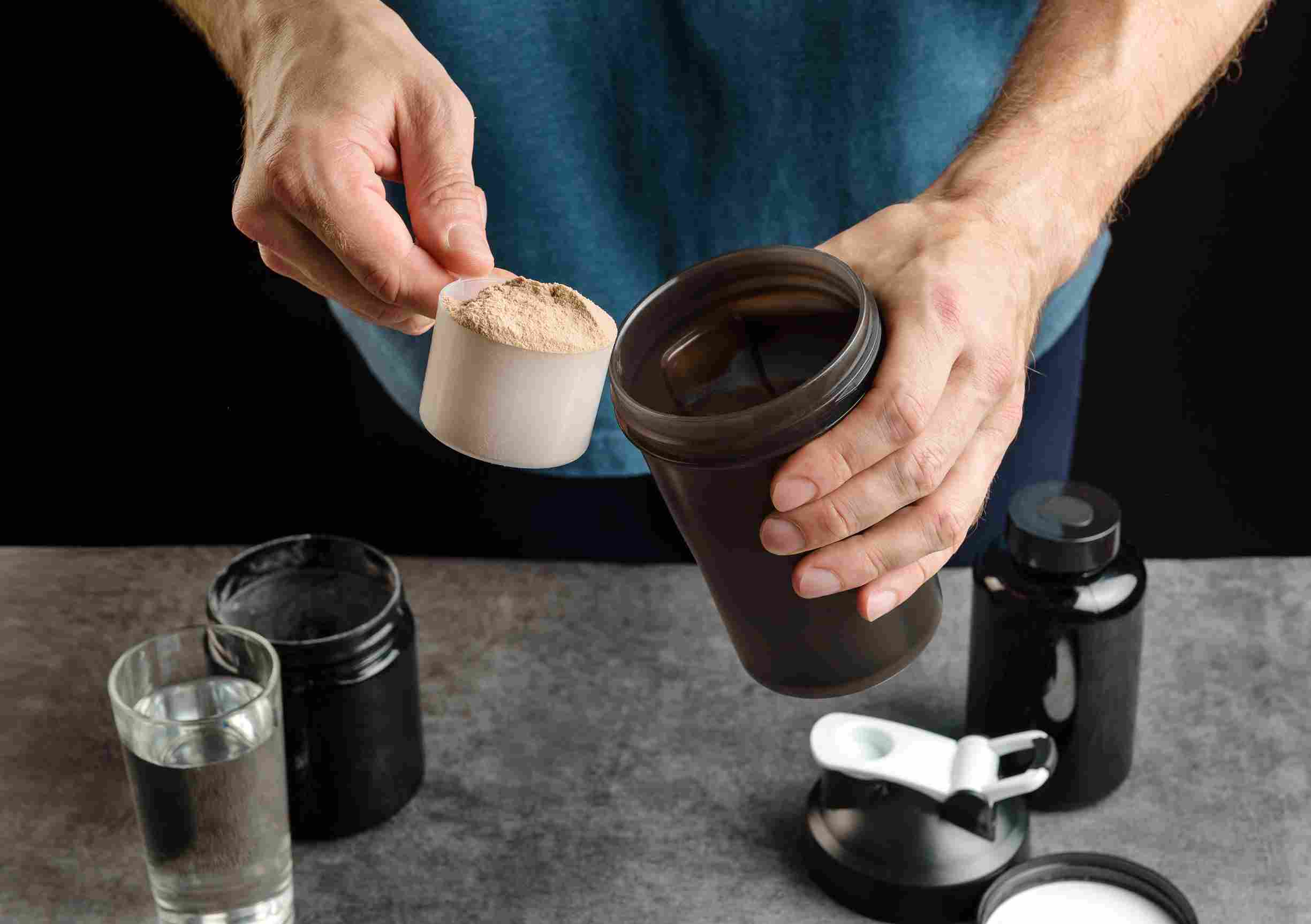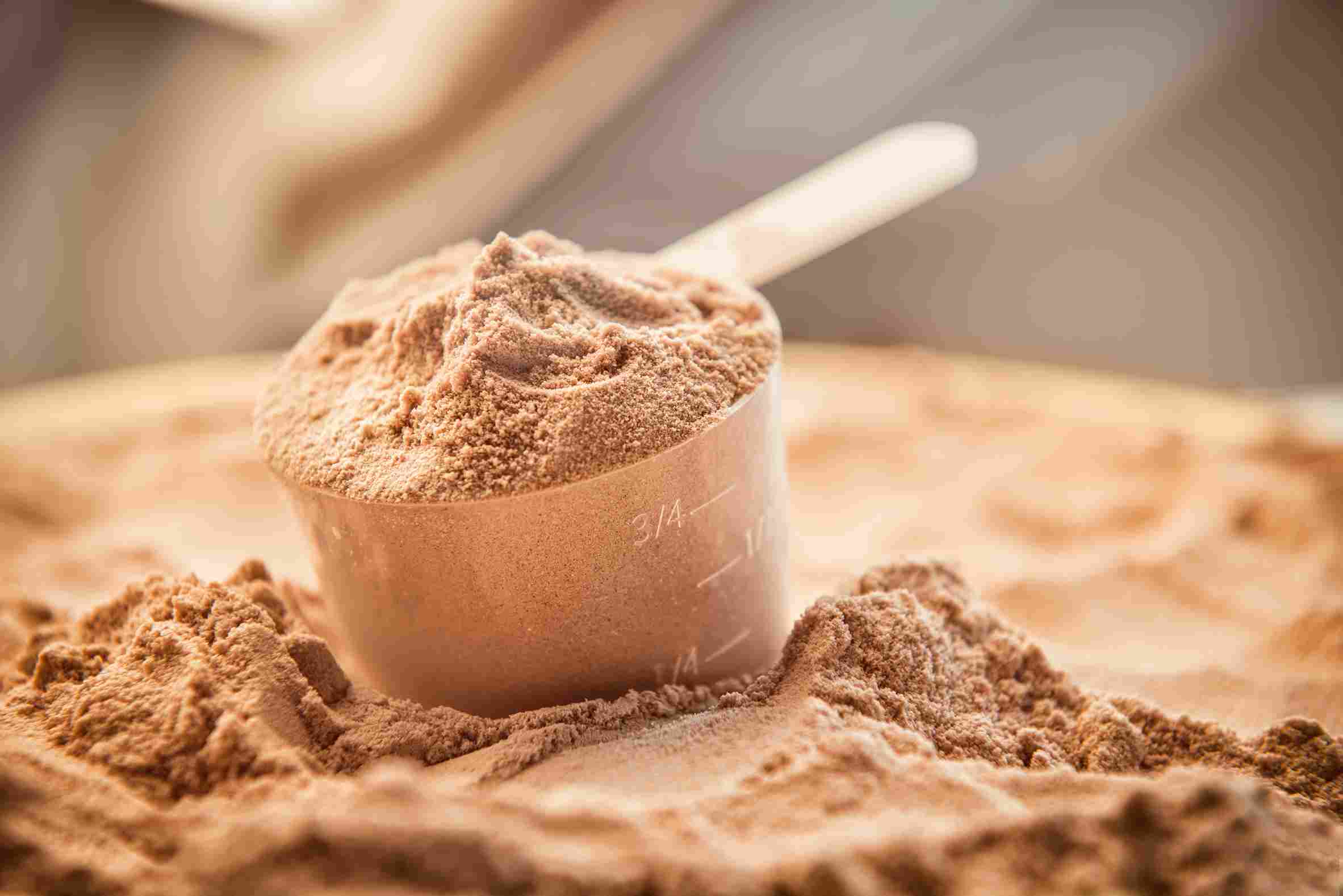As the popularity of health and fitness continues to skyrocket, so does the demand for reliable, effective supplements that can support our fitness journey. One of the most well-known and researched of these supplements is whey protein. But what is whey protein, and how is it made? This comprehensive guide will take you through everything you need to know about this vital supplement.
The Whey Protein Market Size
Understanding Whey Protein
Whey protein is a mixture of proteins isolated from whey, the liquid part of milk that separates during the process of cheese production. It is a high-quality protein, containing all of the essential amino acids needed for muscle recovery and growth. There are three main types of whey protein: Whey Protein Concentrate (WPC), Whey Protein Isolate (WPI), and Whey Protein Hydrolysate (WPH).
Whey Protein Concentrate (WPC): WPC contains low levels of fat and carbohydrates (lactose). The percentage of protein in WPC can range from 30% to 90%, making it a versatile option for those seeking to increase their protein intake.
Whey Protein Isolate (WPI): If you’re wondering what whey isolate is, it’s the purest form of whey protein with the least amount of fat and lactose. It contains 90% or more protein and less lactose, making it an ideal choice for those with lactose intolerance.
Whey Protein Hydrolysate (WPH): also known as hydrolyzed whey protein, is a pre-digested form of whey protein. It is easily absorbed by the body and reduces the risk of potential allergic reactions, making it a suitable choice for those with sensitive digestion.
Each of these forms of whey protein offers its unique advantages and can be chosen based on an individual’s dietary needs, goals, and personal preferences. Now that we know what whey protein is and what it’s made of, let’s move on to how it’s made.
The Whey Protein Manufacturing Process
If you’ve ever wondered, “How is whey protein manufactured?” you’re not alone. It is a complex process that involves a number of steps, each crucial to the final product’s quality and nutritional profile. Here’s a step-by-step breakdown of how whey protein powder is made:

Step 1: Milking
It all begins at dairy farms, where cows are typically milked two to three times daily. The liquid milk produced contains 4 to 6 grams of protein per liter, serving as the initial source of the whey protein we know and love.
Step 2: Transportation
Once collected, the milk is transported by insulated tanker trucks to the whey manufacturing plant. The trucks’ insulation ensures that the raw milk remains cold, preventing spoilage before it reaches the processing plant.
Step 3: Pasteurization
Upon arrival at the plant, the milk goes through pasteurization to eliminate any bacteria. This involves heating the milk to 80 degrees Celsius and then rapidly cooling it down to 4 degrees Celsius.
Step 4: Cheese-Making
The fun part begins here! Whey is derived from the cheese-making process. After the milk passes quality tests, enzymes are added to separate the cheese curd from the liquid whey. The liquid whey is then purified, and the protein is concentrated and isolated. This is achieved via membrane filtration and ion exchange technology, methods that remove fats, carbohydrates, water, and lactose while retaining the protein-rich liquid whey.
Step 5: Drying
Next, the liquid whey is loaded into a dryer, which separates the water from the solid particles through a process involving hot and cold air. The resulting product is a powder composed of up to 90% whey protein.
Step 6: Quality Testing
At this stage, the whey protein powder is tested for purity. If it passes these quality tests, it gets packaged, typically in 25 kg bags.
Step 7: Toll Manufacturing
These bags of unflavored whey protein powder are sent to toll manufacturers for further processing. Here, the raw materials undergo further testing for microorganisms, potency, and other quality parameters to ensure they meet specifications.
Step 8: Flavoring and Mixing
Once the whey protein powder meets the quality specifications, it gets further processed. It’s loaded into high-speed blenders along with other ingredients and flavoring components, depending on the formula of the finished product. Random samples are taken from the batch of finished products and sent to the lab to verify their protein content using an infra-red machine.
Step 9: Final Quality Check and Distribution
If the batch of finished products passes all quality testing, it’s released and shipped to retailers. This is the end product that you typically see and buy from stores. They bear all the nutritional information, product registration with the governing health agency, and are sealed properly to ensure freshness and quality.
So, now when someone asks you, “What is whey protein made of?”, you can impress them with your in-depth knowledge of the manufacturing process, from dairy farm to supplement shelf!
The Benefits of Whey Protein Supplementation

1. Enhanced Recovery and Performance
Protein intake around your workout plays a significant role in muscle recovery and performance, particularly for seasoned gym-goers. A study by Morton et al. suggests that the strength effects of post-resistance training protein supplementation are greater in those with previous resistance training experience. This means that seasoned lifters can further amplify their gains by adding whey protein to their post-workout routine.
2. Boosts Lean Body Mass
For those who are in a caloric deficit, resistance-trained individuals require significantly more protein to avoid losing lean body mass. Having a daily protein intake in the range of 2.3–3.1 g/kg FFM is recommended. And, there’s more good news – even during overeating phases, protein showed no negative effects on body composition in trained individuals.
3. Optimal Protein Quality
Whey protein provides the essential amino acids required for protein synthesis, including leucine, a branched-chain amino acid (BCAA) vital for the recovery and adaptive processes following a training bout. Consuming high-quality protein like whey protein ensures you’re getting the necessary nutrients for muscle building and recovery.
4. Facilitates Versatile Athletic Goals:
Whether the goal is muscle hypertrophy, as in bodybuilding, or enhanced recovery for sports and fitness enthusiasts, intake of whey protein, can be a useful tool to help athletes reach their goals.
5. Delays Central Fatigue in Endurance Training:
Although protein consumption during endurance exercise may not provide immediate performance benefits, it can delay central fatigue, reduce muscle protein breakdown, and enhance whole-body nitrogen balance.
6. Boosts Immune System Function:
Consuming protein in and around intense or prolonged endurance activities can reduce the incidence of upper respiratory tract infections and improve immune system function, which is crucial for athletes in training.
7. Promotes Enhanced Resistance Training Outcomes:
Resistance training paired with per-training protein consumption, particularly for those on calorie-restricted diets, can lead to desired improvements in strength, hypertrophy, or the maintenance of fat-free mass (FFM).
8. Convenience for Athletes:
One of the significant benefits of whey protein is its convenience. It is a versatile supplement that can easily be incorporated into a healthy lifestyle. It can be mixed with water, milk or almond milk or your preferred beverage, making it simple to increase protein intake whenever it’s most suitable – be it first thing in the morning, post-workout, or even as a late-night snack. Moreover, its portability allows for a protein boost on the go, ensuring athletes can maintain their nutritional needs irrespective of their location or schedule.
9. Synergistic Nutrient Impact:
Pairing whey protein with carbohydrates and creatine monohydrate can boost your strength and hypertrophy gains. Carbohydrates have a protein-sparing effect, helping to shift total body protein balance towards the anabolic side, which is the state of building up – exactly what you need for enhanced muscle growth and recovery.
10. Extends Recovery Window:
Studies show that consuming 30g of whey protein 30 minutes before sleep resulted in increased resting energy expenditure and improved VO2 the next morning, indicating enhanced recovery.
The Effective Use of Whey Protein Supplements

Proper usage of whey protein supplements can significantly enhance your workout results. While many associate protein supplementation with post-exercise routines, it’s crucial to understand that its timing effects extend to the entire peri-workout period. For instance, consuming a dose of whey protein immediately prior to a resistance training session can also contribute positively to your workout results.
In a study examining the effects of consuming 25 g of hydrolyzed whey protein before a resistance training session versus consuming the same quantity immediately following the same training session, no differences in body composition changes or one-rep max back squat or bench press were found after an 8-week intervention. This suggests that as long as total daily protein intake is adequate, the timing of protein intake might not be as critical as once believed. However, this does not rule out the possibility that pre- and post-exercise supplementation might provide additional benefits depending on the dose.
But remember, the efficacy of whey protein supplementation is not solely determined by timing. Factors such as your daily protein intake, the presence or absence of an energy deficit, and the type of training you undertake play a role in how much benefit you derive from the supplement.
Tips on Choosing the Best Whey Protein Powder
With a myriad of options in the market, choosing the right whey protein powder can seem like a daunting task. Here are a few tips to help you identify the top-selling whey protein powder that best suits your needs:
1. Check the Protein Content: Look for a protein powder that provides at least 20 grams of protein per serving. This is especially important for individuals who are looking to build muscle or are in a caloric deficit.
2. Consider the Type of Whey: There are three main types of whey protein: concentrate, isolate, and hydrolysate. Each has its own benefits, and your choice should depend on your specific nutritional needs and preferences.
3. Consider the Other Ingredients: Some protein powders may contain added sugars, artificial flavors, or other unnecessary additives. Opt for a protein powder that has minimal ingredients and avoid those with additives you don’t recognize.
4. Taste and Mixability: It’s also important to consider the taste and how well the protein powder mixes. The best protein powders will taste good and mix well, without leaving clumps.
5. Value for Money: While quality is important, price is also a factor to consider. Compare the cost per serving among different brands and choose one that offers a good balance between quality and cost.
6. Choose a Trustworthy Toll Manufacturer: This is one of the most important aspects. The manufacturer should be registered with the FDA and have a facility that is certified Good Manufacturing Practice (GMP). GMP certification ensures that the product is produced in a quality manner, consistently meeting specified quality standards. A reputable manufacturer will perform stringent testing on their whey protein for protein content and overall quality. They should be able to provide evidence of this testing upon request, proving the integrity of their product.
Incorporating Whey Protein into Your Diet
Now that you know how to make whey protein part of your fitness regimen, let’s discuss some ways to incorporate it into your diet. Whey protein is incredibly versatile and can be added to a variety of meals and snacks. Here are a few suggestions:
Protein Shake: This is the most common way to consume whey protein. Simply mix your protein powder with water or milk in a shaker bottle, and your protein shake is ready.
Smoothies: Add a scoop of protein powder to your favorite fruit or vegetable smoothie for a protein boost.
Protein-Packed Pancakes: Swap some of the flour in your pancake recipe for protein powder to create protein-packed pancakes.
Yogurt Parfait: Stir in a scoop of protein powder into your yogurt for a high-protein snack or breakfast.
By incorporating whey protein into your diet and regular exercise routine, you can reap the multitude of benefits this powerful supplement has to offer, from improved muscle recovery to enhanced workout performance.
Wrapping Up: The Power of Whey Protein

Remember, whey protein is more than just a tool for muscle recovery. From aiding in weight management to boosting immune function, this versatile supplement has a lot to offer. So, the next time you’re looking for a nutritional edge, consider incorporating whey protein into your diet.
If you’re interested in how other types of supplements are made, such as the types of capsules that are commonly used, or if you’re looking for a premium toll manufacturer in the Philippines, feel free to explore our site for more information. We’re committed to providing top-quality supplements to support your health and fitness goals. Here’s to a healthier, fitter you!
